|
In the age of artificial intelligence, it's tempting to let a tool like ChatGPT handle tedious tasks such as resume writing. However, there are compelling reasons why you should avoid using ChatGPT for this critical document. Let's delve into why crafting your resume personally or with professional human help is far superior. The Importance of PersonalizationA resume is more than just a list of your jobs and skills; it's a personal marketing document. It needs to convey your unique experiences, your individual contributions, and your specific career aspirations. ChatGPT can generate text based on patterns in data it has been trained on, but it cannot capture your personal touch, your voice, or your professional nuances. Example: AI-Generated Resume Excerpt:
Human-Written Resume Excerpt:
The AI-generated example is generic and lacks personality, whereas the human-written version highlights specific experiences and passions, making it more engaging to potential employers. Lack of Contextual UnderstandingAI tools lack the ability to fully understand the context of your experiences and the specific requirements of the job you are applying for. While ChatGPT can produce grammatically correct and well-structured sentences, it might miss out on emphasizing critical details or aligning your skills with the job description effectively. Example: AI-Generated Skill Section:
Human-Written Skill Section:
The AI-generated skills are vague and lack depth, whereas the human-written skills provide specific contexts and achievements that make your capabilities clear and compelling. The Risk of Generic OutputUsing ChatGPT might result in a resume that sounds similar to countless others. Since AI is trained on existing data, it tends to produce content that mirrors what is already out there. This can be detrimental in a competitive job market where standing out is crucial. Example: AI-Generated Work Experience:
Human-Written Work Experience:
The human-written example provides specific outcomes and quantifiable achievements, making it far more compelling than the generic AI-generated version. Limited Ability to Handle NuancesHuman experiences are nuanced and multi-faceted. ChatGPT can struggle with conveying these subtleties accurately. A well-crafted resume often includes industry-specific jargon, a demonstration of soft skills, and tailored language that resonates with hiring managers – elements that an AI might not handle adeptly. Example: AI-Generated Personal Statement:
Human-Written Personal Statement:
The human-written statement is not only more engaging but also tailored to showcase the candidate's specific motivations and strengths. * * * * * * * * * * * * * * * * ConclusionWhile ChatGPT is a powerful tool for generating text, it falls short in creating the highly personalized, detailed, and nuanced document that a resume needs to be. Your resume is a critical piece of your professional puzzle, representing you to potential employers in a highly competitive market. It is worth investing the time to craft it yourself or seek the help of a professional resume writer who can capture your unique strengths and experiences in a way that AI simply cannot match.
For these reasons, it's best to steer clear of using ChatGPT to write your resume. Instead, focus on highlighting your individual achievements and skills with a personal touch that truly sets you apart. Should I have a new resume or update the old resume?Remodel, or build new? This isn’t just a question for homeowners. It’s also something to consider in your job search. Should you update your existing resume (remodel) or start over with a new document (build new)? There are pros and cons to both, and this guide is designed to help you decide whether you should build on the document you already have, or give your resume a fresh start. Here are some things to consider:
While you should update your resume every six months at a minimum, you should consider completely overhauling your resume every few years to ensure it aligns with modern resume standards and your current job/industry target. About the AuthorMandy Fard is a Certified Professional Resume Writer (CPRW, CMRW) and Recruiter with decades of experience in assisting job seekers, working directly with employers in multiple industries, and writing proven-effective resumes. 10 Things Your Resume Needs
About the AuthorMandy Fard is a Certified Professional Resume Writer (CPRW, CMRW) and Recruiter with decades of experience in assisting job seekers, working directly with employers in multiple industries, and writing proven-effective resumes. In a competitive job market, your resume is your ticket to securing that dream job. However, it's crucial to strike a balance between presenting your qualifications effectively and embellishing the truth. Exaggerating your accomplishments can land you in hot water, but that doesn't mean you can't create an impressive resume. In this blog, we'll explore how to craft an attention-grabbing resume without resorting to exaggeration. A Professional Resume Without Fluff
Crafting an impressive resume without exaggeration is not only about landing the job; it's also about building a foundation of trust and integrity for your entire career. By presenting your genuine skills and experiences effectively, you can create a compelling resume that will catch the eye of potential employers without resorting to falsehoods. Remember, honesty and authenticity are your best allies in the job hunt. * * * * * * * * * * * * YOU MAY ALSO LIKE: Should You Put a Picture on Your Resume https://www.market-connections.net/blog/should-you-put-a-picture-on-your-resume Resume Writing Tips and Samples https://www.market-connections.net/blog/resume-writing-tips-and-samples Customize Your Resume https://www.market-connections.net/blog/customize-your-resume Edit My Resume https://www.market-connections.net/blog/edit-my-resume Resume Update or Resume Rewrite? https://www.market-connections.net/blog/resume-update-or-resume-rewrite How To Quantify Results on Your Resume When Your Job Isn’t Big on Numbers https://www.market-connections.net/blog/how-to-quantify-results-on-your-resume-when-your-job-isnt-big-on-numbers 12 Ways to Ensure That Your Resume Gets Read https://www.market-connections.net/blog/12-ways-to-ensure-that-your-resume-gets-read Which resume paper is best? https://www.market-connections.net/blog/which-resume-paper-is-best About the AuthorMandy Fard is a Certified Professional Resume Writer (CPRW, CMRW) and Recruiter with decades of experience in assisting job seekers, working directly with employers in multiple industries, and writing proven-effective resumes. In today's competitive job market, knowing how to make your resume stand out is essential. However, some job seekers make a questionable choice by including their picture in their resumes. While it may seem like a harmless addition, including a picture in your resume can have unintended consequences that could hinder your chances of securing the job you desire. Let's explore the reasons why it's a bad idea to include a picture in your resume and offer an alternative solution. Unconscious Bias and DiscriminationOne of the main reasons to avoid including a picture in your resume is to eliminate the potential for unconscious bias and discrimination. Human beings naturally form opinions and judgments on appearances, which can lead to unfair evaluations and discrimination based on factors such as race, gender, age, or physical appearance. By omitting your photo, you ensure that the focus remains on your qualifications and skills, promoting fair and equal opportunities for all candidates. Equal OpportunityThe primary purpose of a resume is to showcase your qualifications, experiences, and achievements relevant to the job you're applying for. Including a picture can detract from this objective and introduce unrelated personal biases. Employers should evaluate candidates based on their merit, expertise, and potential to contribute to the organization, rather than making judgments based on appearance. By excluding a photo, you level the playing field and create an equal opportunity for all applicants. Legal ConsiderationsIn various jurisdictions, including a picture on a resume can potentially violate anti-discrimination laws. These laws aim to protect individuals from discrimination based on protected characteristics. When a picture is included, it provides unnecessary personal information that may influence hiring decisions and contribute to biased judgments. To ensure compliance with these laws and maintain fair hiring practices, it's advisable to avoid including pictures in resumes. Consistency and ObjectivityEmployers often have a standardized process for evaluating resumes, involving multiple individuals within the organization. By including a picture, you introduce subjective elements that can vary from person to person, leading to inconsistent evaluations. Objective criteria, such as qualifications, experience, and skills, should be the basis for hiring decisions. By removing the picture, you allow employers to focus on these essential aspects, fostering a more consistent evaluation process. An Alternative: LinkedIn Profile:While it's not recommended to include a photo in your resume, there are alternative ways to showcase your professional image. LinkedIn, a popular professional networking platform, provides an excellent platform for building an online professional presence. It allows users to create a profile that includes a professional photo along with their qualifications, experience, skills, and more. LinkedIn offers a free basic profile option that enables you to create a professional presence, connect with other professionals, and showcase your qualifications to potential employers. You can include a high-quality photo that presents you in a professional light. This way, employers who are interested in viewing your photo can do so in a controlled environment specifically designed for professional networking and job searching. * * * * * * * * * * * * * * * * * * * When it comes to creating a compelling resume, it's crucial to present yourself in a way that highlights your qualifications and skills rather than personal appearance. By omitting your picture from your resume, you eliminate the potential for subjective evaluations. Remember, employers should be interested in your capabilities and what you can bring forth to their company. Let your qualifications speak for themselves, and increase your chances of securing the job based on merit and expertise. For those who wish to share their photo with potential employers, LinkedIn offers a convenient and professional platform to do so. Take advantage of this opportunity by creating a LinkedIn profile that showcases your professional image along with your qualifications, experience, and skills. Membership options are also available on LinkedIn, but anyone can create a basic profile for free, allowing you to present yourself professionally without the need to include a photo in your resume. For further assistance, you can also hire Professional LinkedIn profile writing services. YOU MAY ALSO CONSIDER: BEST COLORS FOR RESUME: https://www.market-connections.net/blog/best-colors-for-resume RESUME WRITING TIPS AND SAMPLES: https://www.market-connections.net/blog/resume-writing-tips-and-samples CUSTOMIZE YOUR RESUME: https://www.market-connections.net/blog/customize-your-resume EDIT YOUR RESUME: https://www.market-connections.net/blog/edit-my-resume RESUME WRITING OR RESUME REWRITE: https://www.market-connections.net/blog/resume-update-or-resume-rewrite About the AuthorMandy Fard is a Certified Professional Resume Writer (CPRW, CMRW) and Recruiter with decades of experience in assisting job seekers, working directly with employers in multiple industries, and writing proven-effective resumes. When asked for a resume for a board position, you might wonder how it's different from a job resume. Writing a resume for a board position requires understanding your target audience. Whether corporate or nonprofit, industry-specific, or skill-focused, knowing how board members are recruited and what they seek is key. Tailor your resume's tone, content, and keywords accordingly. Let's explore the essential elements for an impactful board position resume. Corporate or Nonprofit BoardBefore examining the similarities and differences between the two types of boards, first keep in mind the overarching differences between corporations and nonprofit organizations.
Whether the board oversees a Fortune 500 company, another type of for-profit company, or a nonprofit organization, there are more similarities than differences. Every board has written articles of incorporation, bylaws, and governing principles that outline the responsibilities of the board of directors. Standard board policies cover member independence, conflict of interest, conduct/ethics code, expectations, confidentiality, and indemnification. Taking the time to familiarize yourself with these when targeting a specific board of directors will help you formulate your resume strategy. Both for-profit and nonprofit boards have a responsibility to approve, remain current with, and oversee the organization’s strategic plan, putting considerable emphasis on strategic thinking as a desired skill in filling board seats. Because they generally have a higher level of participation in developing the plan from its initial stages, members of nonprofit boards and start-up companies often serve on one or more strategic planning committees. Overseeing the financial wellbeing of the organization they represent is a primary responsibility of corporate and nonprofit boards; however, there are some key differences. Corporations have an obligation to deliver a financial return to stakeholders; therefore, corporate boards are focused on net earnings, stock prices, and dividend rates. Although many nonprofit organizations have turned their attention toward building and managing investment portfolios, they still rely heavily on fundraising. Because of this, nonprofit boards have a different focus in how they operate, and they consider a member’s net worth or ability to financially support the organization as essential to fulfilling their mission and goals. Bringing in a variety of perspectives, backgrounds, and experiences can be key to an organization’s success. Whether the board is a for-profit or nonprofit, board member diversity (e.g., gender, socio-economic background, race, religion, and nationality) has become a high priority. Boards strive to mirror the demographic of their customers/clients and meet the interests of their regulators and stakeholders. All boards have an obligation to serve as ambassadors for the organization they support, educating influencers and the community about the importance of what they do. And all boards face the same key challenges — rapidly changing technology, market competition, regulatory restrictions, limited resources, and finding and retaining good people. Just as a jobseeker’s resume must illustrate an understanding of these challenges and the candidate’s ability to address them, a resume for a board of director candidate must do the same. Board Selection ProcessBefore we begin looking at the structure and content of the resume, it is helpful to know who will be reviewing the resume, and what they are looking for. For-profit board searches are often conducted by executive search firms, like Spencer Stuart or RSR Partners. Typically, a nominating and governance committee will work with the recruiter to discuss their needs and identify board candidates. The company CEO — and possibly the entire board — will interview and select finalists. Th competition for a spot on a corporate/for-profit board is always fierce. Since for-profit companies have an obligation to deliver a financial return to shareholders, they seek board members with experience starting, running, and growing successful businesses. Expertise in a specific area of operations — such as finance, mergers & acquisitions, or legal — may also be desirable. BoardProspects.com, an online community and recruitment platform for existing and prospective board members, is a reputable source for gaining insight on what companies look for and learning about the skills and backgrounds of existing board members. To get a feel for what a specific publicly traded company looks for, it is also helpful to read their annual proxy statement. With the exception of large, high-profile organizations — like AARP or the American Red Cross — there is far less competition for nonprofit board positions. Like for-profit boards, they look for members with a wide range of skills, but they also want people with expertise in running nonprofit programs, managing community relations, and facilitating fundraising initiatives. BoardWorks has characterized the board selection process as more complex than selecting a job candidate for a management position. When recruiting for a management position, a company is looking for someone with an identifiable skill set to fill a well-defined slot in an organizational chart. By contrast, board appointments tend to be something of a jigsaw puzzle in which the final picture is not crystal clear and can be assembled in many ways. The challenge is to find someone to appoint on their merits who will also fit into and complement an existing boardroom team. BoardWorks states in one of its newsletters that “a particular challenge for selection panels is evaluating applicants who can strengthen the board in ways that were not anticipated before the recruitment process commenced.” Both for-profit and nonprofit boards are legally obligated to follow their bylaws, which may include specific criteria for board size, structure, and composition. Beyond what is specified in the bylaws, the board selection process often involves a more or less formal version of a grid by which to assess and rank candidates. Knowing what is included in this grid will certainly help in knowing what to emphasize on the resume. BoardSource, a Washington, D.C.-based organization dedicated to building strong nonprofit boards, created a board recruitment matrix that breaks down a candidate’s areas of expertise, leadership qualities, access to a variety of resources, network/connections, as well as personal style, age, gender, race, and ethnicity. Similar matrices can be found online for assessing for-profit board member candidates. In an infographic entitled What Makes a Good Board Member?, BoardSource identified these six characteristics:
At the top of this list for both corporate and nonprofit boards is the ability to get along well with others, combined with a high degree of self-awareness, and emotional intelligence. Planning Your Resume ContentNow that you know a little more about the type of board you are targeting — corporate or nonprofit — and what criteria go into the selection process, you can begin planning what to include in your resume and how to present it. Identify your areas of expertise and how they might benefit your target board. Both corporate and nonprofit boards have a need for members with executive resumes whose experience and expertise fall within the following areas: budgeting and finance, human resources, technology, strategic planning, risk management, succession planning, legal, compliance, marketing, public relations, and consensus building. Experience within the same or similar industries, and insight about customer/client needs is also essential. And both types of boards value members who have access to a variety of resources (government connections, attorneys, accountants, consultants). Corporate boards also look for global experience and expertise in matters such as mergers and acquisitions, research and development, IPOs, shareholder proposals, and investments. A few terms that are commonly heard in corporate boardrooms — and that you’ll want to consider including as keywords in a corporate board resume — are earnings per share, EBITDA, quarterly returns, stock buyback, real estate transactions, Sarbanes-Oxley, and Dodd-Frank. On the other hand, nonprofit boards seek members whose expertise may include grant writing, fundraising campaigns, donor relations, endowments, 501(c)(3) applications, and volunteer management. Some of the keywords that you’ll want to include in a nonprofit board resume are donor capacity, donor relations, restricted/unrestricted gifts, pledges, stewardship, community education, foundations, and capital campaigns. Keywords representing personal style that belong in both corporate and nonprofit resumes include consensus builder, collaborator, motivator, strong communicator, and diplomatic. Although you want to draw attention to your contributions and accomplishments, avoid language that suggests you single-handedly brought about results. Whereas the content and tone of a jobseeker’s resume is geared toward promoting the candidate and, ideally, elevating his or her career, the president and CEO of BoardSource made the distinction in tone and content clear in the following statement: “When you join a board, what you are really saying is that you agree to put your personal interests and ambitions in the background. You are there to best serve the interest of the company or organization.” Constructing the ResumeThe overall format of your board resume is not that different than your job search resume; however, sections that are considered optional or secondary to actual work experience have more credence when positioning yourself for a board of director’s role.
Target: Board of Directors — Commercial Banking & Finance Financial Analysis | Mergers & Acquisitions | Audits
In her article, Boardroom Bound? Ten Steps to Get You There, Kay Koplovitz nicely summarizes the key points:
Differences Between a Board Resume and an Employment ResumeAbout the AuthorMandy Fard is a Certified Professional Resume Writer (CPRW, CMRW) and Recruiter with decades of experience in assisting job seekers, working directly with employers in multiple industries, and writing proven-effective resumes. Strategies and TipsWriting an executive resume requires a unique approach that goes beyond the standard resume format and content. This article will will explore the key elements that make an executive resume stand out and attract the attention of hiring agents. You will also find valuable tips to help you create a concise, confident, and impactful executive resume. The Essence of an Executive ResumeAn executive resume distinguishes itself through its format, content, and personal marketing strategy. It is tailored towards a hiring authority who seeks more than the typical qualifications of a job seeker. Executives must showcase specific leadership and visionary qualities that surpass achievement-based resumes. By combining these finer points, the executive resume becomes a highly crafted document. Showcasing Leadership and VisionAs an Executive Resume Writer, I specialize in producing executive resumes that not only exhibit a top-tier appearance but also incorporate personal branding and sales strategies essential for securing executive interviews. I am known for producing resume that will effectively communicate every client’s leadership competency and demonstrate their vision for the future, both for themselves and their target employers. The "Big Picture" PerspectiveUnlike mid-career level or entry-level resumes that focus on skills and concrete accomplishments, executive resumes must provide a comprehensive overview of the client's career path. They should highlight how the executive has taken charge in previous positions, leading organizations towards steady growth, new markets, expanded offerings, or new directions. Developing an Effective Communication StrategyTo produce an executive resume for clients to get more interview invitations, collaboration with clients is crucial. By gaining an in-depth understanding of their management style, goals, and career selling points, I design a communication strategy that persuades hiring managers to reach out for interviews. The executive resume must not only portray professional experience but also convey a desire to succeed and a profound industry knowledge. The Value of Professional AssistanceWhile some job seekers prefer writing their resumes, successful executives recognize the significance of investing in effective marketing. The executive resume serves as a strategic business communication tool, which is why many executives choose to outsource it to professional career marketing firms like Market-Connections Professional Resume Writing Services. It is widely recognized that many executives often seek information on how to hire a resume writer. These services specialize in crafting resumes that highlight executive-level experience, leadership skills, and strategic achievements. Crafting an executive resume requires a distinct approach that showcases your expertise, accomplishments, and potential. It will help you attract the attention of hiring agents and get invited to interviews faster. About the AuthorMandy Fard is a Certified Professional Resume Writer (CPRW, CMRW) and Recruiter with decades of experience in assisting job seekers, working directly with employers in multiple industries, and writing proven-effective resumes. An Essential Tool in Your Job SearchWe celebrate Teacher's Appreciation Week every year during the first full week of May and we recognize the hard work and dedication of educators who go above and beyond to make a difference in our lives. We value the incredible dedication and impact that teachers have on our lives and we teach the children to do the same. For educators seeking new opportunities, a well-crafted teaching resume is an essential tool to showcase their skills and experience. This article provides the key components to include in your teaching resume, ensuring you make a strong impression on potential employers. Clear Career and Summary
Employment History
Scope of Responsibilities
Teaching and Learning Methods
Curriculum Development
Holistic Student Development
Administrative Duties
Assessment Methods
Collaborative Relationships
Student Support and Guidance
Extra-Curricular Activities and Achievements
Notable Achievements
Crafting a comprehensive teaching resume is essential for presenting your qualifications, skills, and achievements to potential employers. By including the suggested components in your resume, you'll have a powerful document that demonstrates your expertise and commitment to shaping young minds. About the AuthorMandy Fard is a Certified Professional Resume Writer (CPRW, CMRW) and Recruiter with decades of experience in assisting job seekers, working directly with employers in multiple industries, and writing proven-effective resumes. Best Colors for ResumeHiring managers don’t see candidates in terms of black and white. Not anymore, anyway. Color is becoming an increasingly important part of résumé design. Color on the résumé shows how to make your resume stand out to human readers. Color can direct the reader’s eye to important information — especially accomplishments. Color Theory and Color PsychologyWhen using color on career documents, it is important to consider both color theory and color psychology. Color theory is the collection of guidelines and principles designers use to communicate with users. In 1666, Sir Isaac Newton defined three groups of colors:
The breakdown of colors is as follows:
Note that colors you see on a screen don’t look the same in print. The RGB color profile consists of red, green, and blue hues that combine to create color variations. This color mode applies exclusively to digital displays (computer monitors, mobile devices, and television screens). However, color elements vary across different computer systems and models, so a RGB color on an iPad may look different than a RGB color on a Surface or a Chromebook. A RGB profile uses an “additive” process to produce color by blending light. The color displayed on your screen depends on the presence or absence of RGB base hues. The presence of all RGB hues at full intensity yields white, while the absence of color produces black. In contrast, print documents are primarily based on a CYMK color profile, which contains cyan, magenta, yellow, and key (black) that combine to produce a range of hues. This four-color process works for any type of printer. If you’ve ever taken a magnifying glass to a printout, you can see the four-color dots that layer to create different hues and gradations. As with RGB profiles, a CYMK color profile varies among different styles and models of printers. CYMK uses a “subtractive” color process. As inks and dyes are layered upon each other, they subtract from the white of the paper. (Think of it when you were a kid — when you mixed lots of different paint colors, it created a dark color — sometimes an ugly brown or black. Using fewer colors created a lighter color, an example of the subtractive color process.) Most modern résumés are viewed on screen, so RGB is the primary factor in choosing colors. However, résumés are sometimes printed out, so make sure the résumé still looks appealing in print form. Like font choice, color choice is often a matter of personal preference. Color theory is a fact (the practical application of mixing and matching various hues), while color psychology is a choice. Color psychology is the influence of colors on human mood and behavior. At its most basic, résumé colors should reflect your personality and positioning. You can also apply color psychology to create a positive psychological impact on the résumé reader. Color choices should also consider accessibility — for example, being mindful of red-green color blindness in some readers. While dark text on a light background is almost always readable, white letters on a dark background does still meet the Americans with Disabilities Act (ADA) accessibility guidelines because it provides sufficient contrast for readability. Reverse text (for example, black text on a blue background) can be an issue when using a low contrast color on a low contrast background, so high contrast is preferred. Text that is larger and has wider character strokes is easier to read; therefore, an 18-point bold font can have lower color contrast than a 12-point serif font. Some hiring managers and recruiters express a strong preference about use — or avoidance — of color on career documents. Color is best for certain industries for sure — among them, design, art, education, advertising, music, and fashion. But even more “traditional” industries are recognizing how effective color and design can be in attracting the reader’s attention. However, some hiring managers like tradition and don’t like to see color anywhere on a résumé. If you are asked by a recruiter to remove the color from your résumé to submit to a specific hiring manager, do a “Save as” of the file and remove it. But for most direct applications with a company, it’s perfectly acceptable to include color, unless otherwise specified. Color psychology is largely impacted by personal preference and perception. However, research has identified some specific characteristics that are often associated with particular colors. For example:
Subtle, jewel tones (navy blue, burgundy, dark green, deep purple) — when used as an accent especially — are appropriate for almost all conservative industries, including legal, finance, engineering, politics, and medicine. Muted, natural tones and pastels are also acceptable. Colors are assigned “meaning” but this can be affected by the age, culture, and gender of the reader. Different parts of the world view some colors very differently. For example, regarding gender preferences, research shows:
Color can be used judiciously to highlight key information on the résumé — such as résumé headings — WORK EXPERIENCE, EDUCATION, AFFILIATIONS, etc. Color can help the reader find important information. Do and Don'ts with ColorDO consider your personal brand and personality when selecting colors for the résumé. Also consider matching the color on the résumé to the brand colors of the company being applied to. Mirroring company colors shows you have done your homework and changing colors is an easy adjustment to make in Microsoft Word. For example:
When using color on a résumé, DO maximize contrast by using “opposite color” pairs — for example, blue/yellow, blue/orange, navy/gold, and purple/gold. DO add color to the design, not just the content. Include color on design elements such as lines, boxes, and callouts. DO make sure the color works both on the screen and when the résumé is printed out. DON’T use too many colors. A maximum of three colors is recommended — one color for the résumé header and sections, a second color for body text, and an accent color to add emphasis (for example, bullets or subheadings). Black or a dark gray is recommended for main body text. DON’T put a light color on a light or white background. From a technical standpoint, color on the résumé has little bearing on résumés filtered through applicant tracking system software, as long as there is sufficient contrast between the text and background. However, some color choices can reduce readability of the résumé if not carefully considered. DON’T be afraid to stand out. You can’t go wrong using black (and white and gray) on a résumé, but it may keep you from standing out in a crowded field of candidates. Best Practices with ColorIn addition to the dos and don’ts listed above, also consider the following best practices:
“Color is like a spice” — use it to accentuate. Too many colors, not enough contrast between colors, and using bright primary colors are just some of the common mistakes made with color on résumés. About the AuthorMandy Fard is a Certified Professional Resume Writer (CPRW, CMRW) and Recruiter with decades of experience in assisting job seekers, working directly with employers in multiple industries, and writing proven-effective resumes. Three Free Networking Cover Letter SamplesEvery job seeker has a unique story.... You might be searching for job search ideas.
This post will offer you a cover letter teamplate free of charge to help you with either of the three situations above. Sample Networking Cover Letter After a LayoffDear (Contact Name): I am reaching out to you to ask for your help. As you know, my position was eliminated when Chandler-Roth Department Stores was acquired last month. I am looking to stay in the retail industry and, ideally, remain in the Minneapolis area. My “perfect” job would be another associate manager position — one focused on operations or merchandising (or a combination of both) — in Minnesota or Wisconsin. I would appreciate any advice, contacts, or industry insights you can share with me. I’ve attached my résumé — please feel free to pass it along to anyone you think may be interested in it. If you know of a company that is looking to grow its retail management staff — or fill any open position — please let me know. I’d also appreciate any recommendations of retail recruiters, or recruiters who work on placing management candidates in the Minneapolis area. (I’d prefer to stay in the retail industry, but would potentially consider a management opportunity in a new industry.) Highlights of my qualifications include:
I’m lucky enough to count you as a (friend, colleague, client, co-worker) and I want to thank you (in advance) for any help you can give me. Thanks. Your name P.S. — If you’re on LinkedIn, let’s connect on there. You can find my profile at www.linkedin.com/in/mandyfard Sample Networking Cover Letter for a Relocating JobseekerDear (Contact Name): I recently relocated from California to Ohio. Consequently, I am looking for my next challenge! My focus is a management role drawing on more than 15 years of experience in manufacturing and production. I have enclosed my résumé, which outlines my qualifications. I am asking my network — including you! — to help me identify possible employers that would value someone with my experience and skills. My work history emphasizes supervising production teams (up to 30 employees per shift), keeping manufacturing lines operating at peak capacity with a minimum of downtime, ensuring quality and regulatory compliance, and managing special projects. If you know of someone I should contact to explore an opportunity, I’d appreciate the referral. You can reach me at (phone number) or email me at (email address). Sincerely, Your name Sample Cover Letter for Networking and Updating Contacts About a Job SearchDear (Contact Name): Happy Spring! I wanted to drop you a note to give you an update on how things are going in my job search. Since leaving ABC Company in January, I completed two short-term contract projects, most recently with XYZ Company. I’ve applied for several full-time accounting positions, but have been finding things to be a bit slow. So now I’m turning to my friends-and-family network for your help! I’ve enclosed an updated copy of my résumé in the hopes that you might be able to help me identify and/or make contact with a company or organization that might need someone with my skills and experience. While I’m most interested in a full-time position, I’m also open to a contract opportunity — particularly one that might lead to a full-time position. If you know someone who might be interested in what I can do for them, would you mind passing along my résumé? And give me a call if you have any ideas for me, or if you want to catch up on things. You can reach me at home (phone) or on my cell (phone). I appreciate your help! Best regards, Your name About the AuthorMandy Fard is a Certified Professional Resume Writer (CPRW, CMRW) and Recruiter with decades of experience in assisting job seekers, working directly with employers in multiple industries, and writing proven-effective resumes. |
Categories
All
powered by Surfing Waves
AuthorMandy Fard is a Certified Professional Resume Writer (CPRW, CMRW) and Recruiter with decades of experience in assisting job seekers, working directly with employers in multiple industries, and writing proven-effective resumes. Archives
July 2024
|
-
Greater Los Angeles
and Kern County
-
[email protected]
.





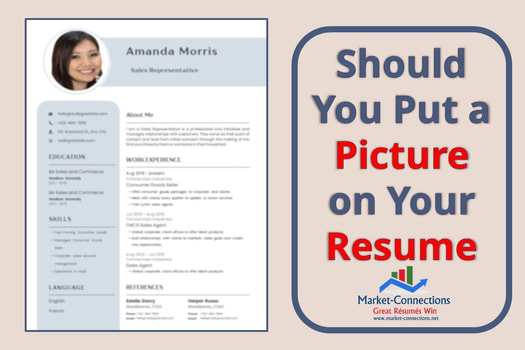
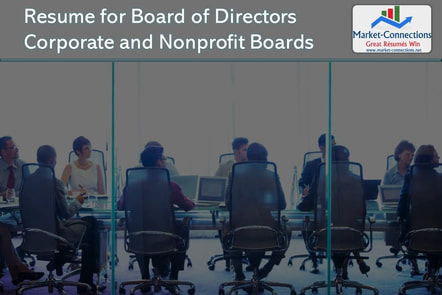
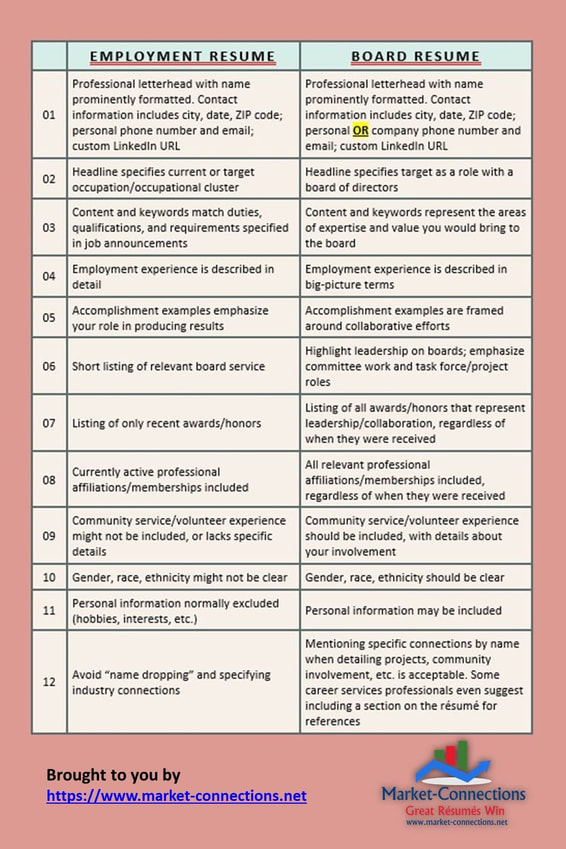

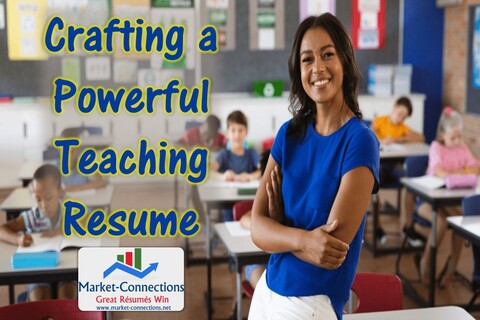

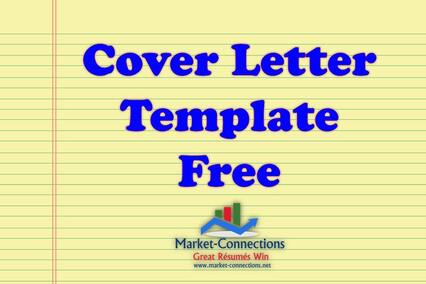


 RSS Feed
RSS Feed



